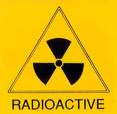Accident at Second Japanese Nuclear Complex: The Nuclear Accident You Never Heard About

You’ve heard about the accident at the Fukushima Daiichi nuclear complex.
But there was another Japanese nuclear accident last year.
As I explained in March of last year:
The 6 problem reactors which have gotten all of the press are located within the Fukushima Daiichi complex.
However, the same nuclear power plant operator that runs the Daiichi complex – Tepco – runs a separate nuclear complex 7 miles away, called Fukushima Daini. There are 4 reactors located at the Daini complex.
On March 12th, Tepco reported:
Unit 1
– At 8:19am, there was an alarm indicating that one of the control rods
was not properly inserted, however, at 10:43am the alarm was automatically called off. Other control rods has been confirmed that they are fully inserted (reactor is in subcritical status)***
– At 6:08PM, we announced the increase in reactor containment vessel
pressure, assumed to be due to leakage of reactor coolant. However, we
do not believe there is leakage of reactor coolant in the containment
vessel at this moment.– At 5:22AM, the temperature of the suppression chamber exceeded 100
degrees. As the reactor pressure suppression function was lost, at 5:22AM,
it was determined that a specific incident stipulated in article 15,
clause 1 has occurred.(Article 15, Clause 1 of Japan’s Act on Special Measures Concerning Nuclear Emergency Preparedness simply provides that there are elevated radiation levels or that “an event specified by a Cabinet Order as an event that indicates the occurrence of a nuclear emergency situation has occurred.”)
On March 14th, Reuters reported:
Tokyo Electric Power Co Inc said on Monday it had detected a rise in radiation levels at its Fukushima Daini nuclear power plant.
A company spokesman said that the cooling process at the plant has been working properly and that the rise was probably due to radiation leak at the nearby Fukushima Daiichi nuclear complex, where cooling functions were damaged by Friday’s massive earthquake and tsunami.
Today, Tepco announced that smoke was seen rising from Daini reactor number 1:
Smoke was spotted at another nuclear plant in northeastern Japan on Wednesday, Tokyo Electric Power Co. said.
The company said smoke was detected in the turbine building of reactor No. 1 at the Fukushima Daini nuclear power plant around 6 p.m. (5 a.m. ET).
Smoke could no longer be seen by around 7 p.m. (6 a.m. ET), a company spokesman told reporters.
Reuters noted in July:
The operator of Japan’s Fukushima Daini nuclear power plant, located near the tsunami-crippled Daiichi plant, on Thursday halted the cooling system at one of its reactors after electrical sparks were detected, Kyodo news agency reported.
But surely everything has been fixed at the Daini plant … otherwise we would have heard about it, right?
Unfortunately, Mainchi Daily News reports today:
The Nuclear and Industrial Safety Agency told Tokyo Electric Power Co. [Tepco] on Wednesday to prepare a report by the end of January on how to repair equipment at its Fukushima Daini nuclear power plant damaged by the March 2011 earthquake and tsunami, a senior agency official said.
The report is needed to “further ensure” the plant will remain in a stable state of cold shutdown, Kenji Matsuoka, chief of the disaster prevention section at the agency, said at a press conference, denying it is aimed at requiring the utility, known as TEPCO, to prepare for restarting the plant.
A cold shutdown is defined as a condition in which the bottom part of a reactor pressure vessel is kept below 100 C and exposure from the release of radioactive substances is being significantly contained.
The Fukushima Daini nuclear power plant was not so fatally damaged as the nearby Fukushima Daiichi plant by the magnitude-9.0 earthquake and subsequent tsunami. In December, the government lifted its declaration of a state of emergency at the Fukushima Daini plant.
But facilities at the plant, including the emergency power generator and the cooling system for spent nuclear fuel pools, have been damaged, according to the agency.
Of course, the “cold shutdown” label is a political – rather than scientific – one. As such, it is difficult to know how severe the problems at the Daini complex really are.
In fact, while it has gotten no mainstream news coverage, Tepco’s president apologized for the accident at Daini on November 4th and again on January 11th (Daini is also called “Fukushima II“).
And a professor emeritus at Tokyo University specializing in metallic materials science said last week that Daini’s containment vessel was damaged by the earthquake.
And Japan’s TBS News allegedly reported in June that 3,000 tons of radioactive water were sitting in the basements of the Daini nuclear complex.

